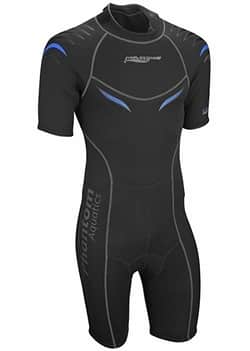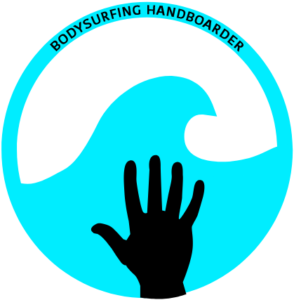After trying lots of wetsuits, researching standard features, and price shopping, I think I finally found the best wetsuits for bodysurfing.
What is the best wetsuit for bodysurfing? This depends on the style you are looking for so here are the best wetsuits by type:
- Rash swim tee: Xmanta Rash Guard Swim Tee
- Wetsuit top: CtriLady Long sleeve wetsuit jacket
- Shorty wetsuit: O’Neill Men’s Reactor
- Full-body wetsuit: Seavenger Odyssey
- Best wetsuit for cold water: O’Neill Men’s Dive Sector 7mm
To help you find the best wetsuits, you should know what features to look for. Here are some standard features to consider when buying your next wetsuit.
What to look for
What features should a quality wetsuit have? Here are a few things you need to look for before you buy your wetsuit:
- Thickness
- Shape
- Stitching
- Zipper
- Material
- Price
Thickness
The thickness of a wetsuit will help regulate your overall body temperature. It is important to purchase the correct thickness based on the temperature of the water you will be bodysurfing.
The thickness of wetsuits is measured in millimeters. Typically, two or three numbers represent this measurement. Check out the standard measurement of a full body wetsuit below:
4 / 3 mm
The first number is the measurement of the thickness of the material surrounding your torso. There is more thickness located in the midsection area of the wetsuit to help preserve your core body temperature.
The second number represents the thickness of the bodily extremities. Thinner neoprene is typically used for extremities, which makes it more flexible so your arms and legs can move easily.
*Note that there could also be a third number. If this is the case, the second number in the measurement represents the thickness of material for your legs and the third number represents the thickness of material in your arms.
Shape
You should also know the shape of the wetsuit you want. You can choose from 3 main shapes:

Full Body Wetsuit

3/4 Body Wetsuit (aka “Shorty”)

Wetsuit Top (Longsleeve/Shortsleeve)
The shape of the wetsuit you buy depends on the water temperature and also personal preference. For example, in colder waters, I prefer to wear a full-body suit to stay warm whereas in warmer waters I will only wear a wetsuit top.
Stitching
Stitching is an important part of a wetsuit. It ties everything together. There are 3 main types of stitching that every wetsuit has.
- Overlock Stitching – This type of seam is used for cheap wetsuits. The stitching protrudes from the neoprene and may feel itchy when you wear the wetsuit. This type of stitching is strong but allows water and wind to compromise the suit through small holes.
- Flatlock Stitching – This stitching is more comfortable than overlock stitching because it lies flush with your skin instead of sticking out from the neoprene material. This seam is not completely waterproof so some water will seep in when using. It is best to use in water temperatures over 62 degrees Fahrenheit.
- Sealed – This seam has panels that are glued and then blind stitched. It is important to note that over time continued use may create tiny holes, which could let in water. This wetsuit is best for water temperatures of 55 degrees Fahrenheit or warmer.
- Sealed and Taped – This type of seam is glued then blind stitched. Furthermore, the interior seam taping provides a nice waterproof seal. This type of wetsuit is perfect for water temperatures colder than 55 degrees Fahrenheit.
- Liquid tape – This seam uses rubber to seal the inside and outside. This type of stitching makes the wetsuit water-resistant.
- Neoprene Tape – If you want ultimate flexibility then neoprene tape is the type of wetsuit to get. It is also completely waterproof.
Zippers
Don’t forget to check out what type of zipper your next wetsuit has. This is a key feature that impacts how you get into and out of your wetsuit. The type of zippers can vary.
Here are the different types of standard zipper designs wetsuits have:
- Back Zipper – this type of wetsuit zipper opens and closes vertically up and down your spine. It is typically the easiest to put on and take off. Usually, this zipper has an extra-long cord for you to easily pull it down or up. Back zippers can become stiff, which can restrict movement. Plus, if your arms are not flexible, you may have trouble reaching the zipper cord even though it is long.
- Chest Zipper – this type of zipper opens and closes horizontally across the front of your chest. It provides more flexibility and easy access. It does a great job of keeping water out but may be more challenging to get into and out of.
- Zipperless – zipper-free wetsuits are designed with extremely flexible liners so no zipper is needed. Instead, it uses velcro to help keep your wetsuit tight and prevent water from entering. These type of wetsuits are typically lighter and thinner so they are best used in warmer waters. They are also better if you are seeking ultimate mobility.
Material Quality
The majority of wetsuits are made of neoprene. Skins suits are made of Lycra. Different brands use different qualities of neoprene that vary in durability and flexibility. Some feature more stretch while others feature lighter material with more airflow. The type you get depends on personal preference and budget.
The key takeaway to consider regarding the neoprene or lycra material, however, is the flexibility. Neoprene or lycra material will give you the stretch you are seeking. I recommend lycra wetsuits if you are bodysurfing in warm, tropical climates to better protect you from UV rays.
If your wetsuit is not easy to move around in, that will be a problem. You want to feel comfortable and have maximum mobility while out in the ocean.
Having a wetsuit that weighs you down can cause fatigue. When you add less flexibility into the equation, that puts even more stress on your muscles.
Price
You need to also consider your budget when purchasing a wetsuit. Some of these can cost upwards of $200 so plan accordingly.
The thicker the wetsuit the more it costs. Therefore you may need to start saving up if you want a top-of-the-line wetsuit for colder waters.
Contrastly, thin wetsuit tops for warmer waters are much cheaper. There is less material so it won’t empty your wallet.
Types of Wetsuits
I came across quite a few different wetsuits in my search for the best one and can summarize into five different shapes or categories: (1) full-body wetsuits (2) Shorty wetsuits (3) wetsuit tops (4) infrared wetsuits (5) wave wrecker wetsuit.
Full-Body
The full-body wetsuit covers your entire body from head to toe literally if you decide to include the hood and boots. These are great for bodysurfing in colder waters as they keep your entire body the warmest. The thicknesses of these wetsuits range from 5/4mm to 8mm.
Shorty
The shorty wetsuit is a full-body wetsuit but the extremities feature short sleeves for the arms and truncated bottoms that look like shorts. Check out the O’Neill Reactor to get a better idea of what this type of wetsuit looks like.
Because you are more exposed to the temperature of the water, these type of wetsuits are better for warmer waters. Furthermore, they are very easy to get in and out of.
There are a few different alternative types of shorty wetsuits to choose from. The short john/jane wetsuit is a classic style that features a sleeveless top. It is primarily thinner than most wetsuits. The short arm steamer wetsuit features a pantless and sleeveless design, which is best for warmer temperatures.
Wetsuit Tops
If you live in a warm climate and all you need is a top, then a wetsuit top is exactly what you need. They come in short-sleeve, full-sleeve or sleeveless designs.
I really like this wetsuit jacket, which is perfect for winter time in Florida. It does a great job of keeping my torso and arms warm. The front zipper makes it easy to put on and take off. It also does a great job of stopping the wind and water from entering.
A wetsuit swim tee is perfect for preventing rashes. It does a great job of protecting your nipple region from rashes when surfing. It also gives you more protection when bodysurfing in rough chop where there is seaweed and jellyfish.
Infrared wetsuits
Infrared wetsuits will keep you super warm using FAR infrared technology. Some of these wetsuit designs like the Quicksilver Syncro use material enriched in fibers that capture your body heat and convert it to infrared rays that generate heat for your body. Other designs incorporate a small, waterproof battery to heat the wetsuit.
These type of wetsuits are amazing for your body. They can keep you warmer longer when bodysurfing in cold waters. You may notice that any aches or pains in your joints get relieved when wearing this type of wetsuit. Infrared red suits also accelerate metabolism and improve blood circulation.
Wave Wrecker Suit
I recently came across the wave wrecker wetsuit during my research that will step up your bodysurfing skills tenfold. This type of wetsuit is designed in a way that turns your body into the surfboard. If you couple this with your a handboard, there’s no telling how amazing of a ride you will get!
This technology allows you to catch more waves and carve them up easily like a professional. It improves your speed, increases buoyancy, and minimizes overall drag. You will be riding waves faster and longer than ever before with ultimate control.
Best Cold wetsuit
If you bodysurf in a cold climate then you will need a cold wetsuit if you want to stay in the water for more than just a few rides. You need a suit that is thick and warm.
A cold wetsuit will help to seal your body in tight and prevent water from entering the suit. The best cold wetsuits are around 7mm thick. I like the Men’s Dive Sector 7 from O’Neill, which is a high-quality brand that is very reputable.
Best Warm water suit
If you live a tropical climate then a skin suit like the Copozz may be better suited for you. These type of wetsuits are not designed for warmth. Instead, they are designed for UV protection. These are best for temperatures of 85 degrees or above.
A skin is a suit not made of neoprene and is more for exposure protection to protect you against the above-mentioned things and not so much for warmth. If you are diving in very warm waters
What kind of wetsuit do you need?
Determining the kind of wetsuit you need ultimately comes down to the temperature of the water you are bodysurfing in. If you are surfing in cold waters then you obviously want less of your body to be exposed so you can maintain core body heat. On the other hand, if you are bodysurfing in warm water then you will need your suit to be thinner and lightweight because the water temperature will be warmer.
While thickness is one of the primary factors to consider, you should also look at the shape of the wetsuit you want. This is based on personal preference and overall comfort. Below is a wetsuit thickness/temperature chart to help you find the best wetsuit.
Wetsuit Temperature and Thickness Chart
What wetsuit thickness should you get and how thick should your wetsuit actually be? Here is a chart that you can reference when buying your next wetsuit. The factors you need to consider are thickness and water temperature. The chart displays the type of wetsuit and the recommended thickness and ocean temperature.
| Type of Wetsuit | Thickness | Climate | Temperature (C/F) |
| Full Body with Hood | < 7mm | Cold | 7/44.6 |
| Full Body | 4/3mm – 5/4mm | Cold | 11/51.8 |
| Shorty | 2mm | Cool | 17/62.6 |
| Top Long Sleeve | .5mm | Warm | 25/77 |
| T-shirt | N/A | Tropical | 26+/78.8+ |
There are multiple options regarding your bodily extremities. If you live in a climate where there are cold winters and warm summers, you may need to purchase two different types of wetsuits to accommodate both seasons.
You should also consider a few other things when purchasing your wetsuit. Here is a quick list for your reference:
- The temperature of the air – this can influence the thickness of the suit you buy to help keep you warmer.
- Your sensitivity to cold – if you tend to get cold easily, then go with a thicker wetsuit to help maintain your core body heat.
- Wind Speed – Factoring in wind speed may cause you to purchase a different suit thickness and shape. If the wind is high and cold, you may opt for a full bodysuit with a hood.
- Activity Level – If you are super active in the water then you may need less thickness for more flexibility and freedom.
What size wetsuit to get?
To get the correct size wetsuit, consult this wetsuit size guide I found on the Ripcurl site. It provides an accurate estimate of wetsuit sizes in both standard and metric measurements.
It is important to get a wetsuit that fits properly so it can protect you accordingly. If it is too big, water will be able to easily penetrate the suit. If it is too small, it will be very uncomfortable and difficult to put on and get off.
How Should Your Wetsuit Fit?
How tight should your wetsuit be? Your wetsuit should fit snug. It should be form-fitting but not too tight. If it is too tight then it can restrict movement and feel uncomfortable. If it is too big then water can enter.
Here is a quick checklist regarding how your wetsuit should fit:
- A properly fitting wetsuit is challenging to put on when dry
- There should be no excess room in the crotch, shoulders, or torso region
- You should be able to lift your arms over your head without much resistance
- You should be able to squat with minimal discomfort
Best Wetsuit Brands
There are quite a few wetsuit brands out there that claim to be the best. I have narrowed it down to three brands that consistently seem to produce the best-selling suits and are popular in the surfing community. You may actually even recognize some of these:
Benefits of wearing a wetsuit
Why do you need to wear a wetsuit? Below is a list of advantages to wearing a wetsuit while bodysurfing:
- Maintains core body temperature when bodysurfing in cold water
- Allows you to bodysurf for a longer period of time
- Protects you from jellyfish, seaweed, and other sea creatures or bacteria
- Provide additional floatation and buoyancy
- Reduces drag
- Makes your body more streamlined
What to wear under your wetsuit
If you are new to bodysurfing you might be wondering if you should wear anything underneath your wetsuit or if you should wear anything at all?! Ultimately this depends on personal preference.
As a guy, if I’m bodysurfing in warm waters, I’ll most likely only be wearing a rash guard or wetsuit tee-shirt so I won’t bother to wear anything underneath. A few of my female surfer friends prefer to wear a bikini top underneath their rashguard for additional support.
When I’m in colder waters, I will wear a thin layer like these compression shorts you can get at Amazon. Women typically wear a bikini or one piece. I also met a few scuba ladies that would wear neoprene shorts like these that I found on Amazon and a sports bra.
Basically any form-fitting, quick-dry clothing is comfortable to wear under your wetsuit. You can go completely nake when wearing a wetsuit but be mindful if you need to change in public or if you are sensitive to colder climates. If you do rent a wetsuit, then I recommend wearing a layer of clothing underneath your wetsuit since you don’t really know how well it has been cleaned.
How do wetsuits work?
Wetsuits essentially act as a thin layer of insulation. It captures a thin layer of water in between your body and the suit. The thin layer of water that remains trapped in the suit is then heated by your own body temperature, which in turn prevents you from losing warmth.
It is important to understand that wetsuits are not designed to keep you entirely dry or protected from water. It is only an aid to help you enjoy the water longer by keeping you safe and warm.
Lycra wetsuits, on the other hand, are designed to protect you from harmful UV rays. If you are bodysurfing in a tropical climate, this is the type of wetsuit you want to wear.
